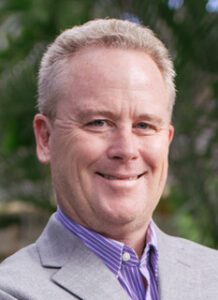By Catherine Komp
Newsletter Editor
Philanthropy is playing a growing role in funding local news, but what do we know about the relationships between funders and newsrooms? What kinds of editorial agreements should be put in place? And what do consumers think about foundations funding news?
New academic research commissioned by Journalism Funding Partners (JFP) helps shed some light on these topics, and taps into other insights about audience preferences for local news.
We’ll dig into some of the findings in a bit, but first I wanted to share some background on JFP for those unfamiliar with this important local journalism funder. The organization got started in 2019 and has strong ties to North Carolina, with former News & Observer Publisher Orage Quarles, Capital Broadcasting Company’s Jim Goodmon and former McClatchy VP of News Anders Gyllenhaal serving as founding board members.

But JFP isn’t like the Knight or MacArthur Foundations, explains Executive Director Rusty Coats.
“We’re not sitting on a corpus of money,” said Coats.
The role they do play is as intermediaries between family and place-based funders, like community foundations, and local news organizations.
“If I’m clinical about it we’re middle men. And if I’m romantic about it, we’re matchmakers,” said Coats.
JFP works across the country and here in North Carolina, they’ve successfully matched about $2 million in funding with local news outlets including funding climate reporters at the News & Observer, WRAL, the StarNews and the Winston-Salem Journal. They recently facilitated funding for a Spanish-language climate reporter at Univision 40/WUVC and are working to finalize an agreement for a new position in Western North Carolina.
Nationally, JFP has facilitated funding for coverage of health, housing, indigenous issues, racial equity, and arts and culture as well as journalism training initiatives.
This kind of matchmaking is new, and there’s lots of potential for it to grow. Coats says the amount of investments from family and place-based funders eclipses those of national funders. He shared some data with us from Jonathan Bergdoll with the Lilly Family School of Philanthropy at Indiana University, who analyzed 2022 IRS tax filings:
There are 91 private foundations in the data granting out $100 million+, totaling about $40 billion in grants; meanwhile there are about 75,000 private foundations in the data granting out less than $100M, totaling about $53 billion in grants.
Going off of the given name of the grantee organization alone, we find that the big foundations granted out about 120,000 grants to about 51,000 organizations; the smaller foundations granted out about 1.65 million grants to about 775,000 organizations.
Coats says the majority of family funders working with JFP hadn’t invested in news previously. And this is where JFP’s new research comes in, providing current and prospective funders with details about successful initiatives, goal alignment, editorial independence and transparency as well as insights from news consumers themselves.
Headed by Louisa Ha at Bowling Green University, the recently published white paper is titled “Best Practices in Funded Journalism and Trust in Local News Media: Perspectives from Philanthropies, Newsrooms, and the U.S. Public.”
It’s a fascinating study and I encourage you to spend some time with it, but I also rounded up some highlights that caught my attention:
🗣️ Every funder interviewed declared their support of editorial independence, but the specifics of what that means aren’t always spelled out in agreements. The researchers provide sample language for newsrooms and funders to use.
🔍 Disclosure of the funder is important for transparency and accountability, but this can be tricky for donors who’ve traditionally maintained anonymity (like many family foundations prefer to do). Guidelines for these situations help get all parties on the same page before agreements are signed. (Sample language is also included for these situations too.)
📊 Just 17% of respondents to the survey were aware of philanthropies or foundations funding local news initiatives. Foundations that participants could name are the common ones you hear repeatedly on PBS: Annie E. Casey, Bill & Melinda Gates, and Ford Foundations, to name a few.
🍎 The most important topics for respondents were public safety, health and healthcare, the economy/economic mobility, education, housing and press freedom/freedom of speech.
🧥 The least important topics included fashion, AI, sports/entertainment and arts and culture.
📺 TV & social media are by the far the most popular ways for people to seek news on topics they care about, while local broadcast stations, local newspapers and public media (including their digital platforms) were the most trusted.
✅ No cost/free is the most important factor when choosing a news platform, followed by trustworthiness of the news organization.
🚫 People who preferred social media as their news platforms are the least likely to vote in local elections.
🤝 Researchers found a positive significant relationship between local news media use and feeling connected to the local community.
Coats says the findings are promising for the work that JFP, the NC Local News Lab Fund, Press Forward and others are doing to build relationships with funders to increase the depth, diversity and sustainability of local news.
“If you care about clean air and clean water, you care about local news. If you care about early childhood education, you care about local news. If you care about elder abuse, you care about local news,” said Coats. “It really is about raising the awareness of the value of quality, independent local news and the health of our communities.”
Find the researchers’ recommendations based on their findings in the full white paper and two summaries of the study compiled by JFP.
Are you a funder or news organization that wants to learn more about JFP and their matchmaking? Get in touch by filling out this form.



